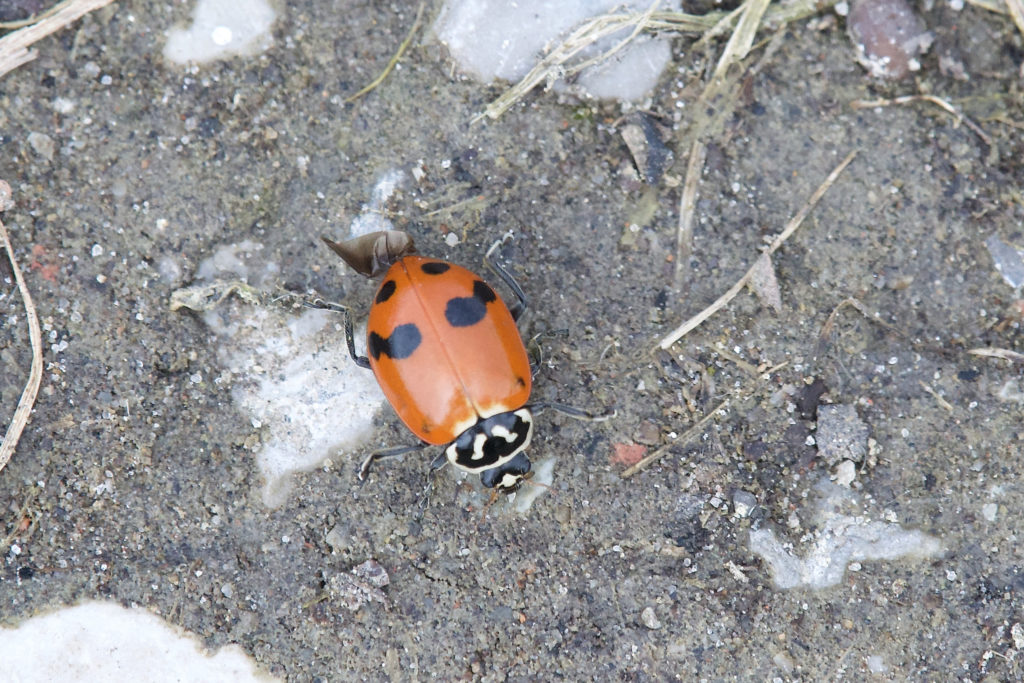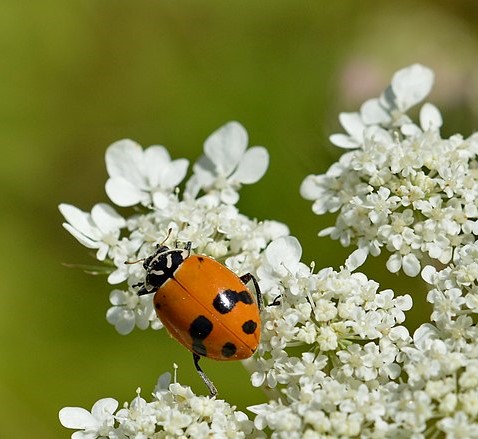
Glacial Lady Beetle © Owen Strickland
The Glacial Lady Beetle is native to North America. Its wing covers are reddish-orange and its spots are mostly located close to its rear, although smaller spots or a fused marking can be present depending on the subspecies.
Status
Native
Ranked as Vulnerable in Alberta and Saskatchewan; and as Apparently Secure in British Columbia and Ontario. The Glacial Lady Beetle has not been ranked in the United States.
Last Seen
1997
Fun Fact
Although the Glacial Lady Beetle is native to the U.S. it is not found in the south-eastern states.
Identification
Glacial Lady Beetles are 5.5 to 8 mm in length. They are oblong in shape.
- Head: Black, with a white diamond-shaped patch in between the eyes.
- Pronotum: Black, with a white margin on the front, wrapping around the sides. There are two convergent white lines on the black portion of the pronotum.
- Elytra: Light yellow-orange in color. There are typically four black markings (two per elytron), concentrated at the posterior end of the elytra. The top two black markings resemble slightly wavy bars, extending almost entirely across each elytron. Below these two bars are two oval-shaped black spots. Glacial Lady Beetles occasionally have two additional black spots on the top of the elytra, close to the pronotum.
- Legs: Black.
- Often confused with: Five-spotted Lady Beetle, Convergent Lady Beetle, Variegated Lady Beetle.
Habitat
Prairies, fields, agricultural crops; associated with goldenrod plants.
General Range
There are three subspecies in North America. In Vermont, we have Hippodamia glacialis glacialis.
- H. glacialis glacialis: Great Plains to the Atlantic coast, excluding Texas. North into Canada.
- H. glacialis lecontei: Rocky Mountains west to southern California and north to British Columbia, Alberta, and Saskatchewan.
- H. glacialis extensa: San Francisco Bay area.
Food
Aphids and other soft-bodied insects. One study found that Glacial Lady Beetles were the most abundant predator of Trirhabda (genus of leaf beetles) larvae on Goldenrod.
Life History
Presumably overwinter near the sites they feed at. Glacial Lady Beetles emerge from their hibernation in May. Encountered with the greatest frequency between late May and early July. Little information is available on Glacial Lady Beetles.
More Information
You can find more information about Glacial Lady Beetles using the following links:
Vermont Distribution
Visit the iNaturalist Observation Map and Occurrence Records to find out where Glacial Lady Beetles have been seen in Vermont.







